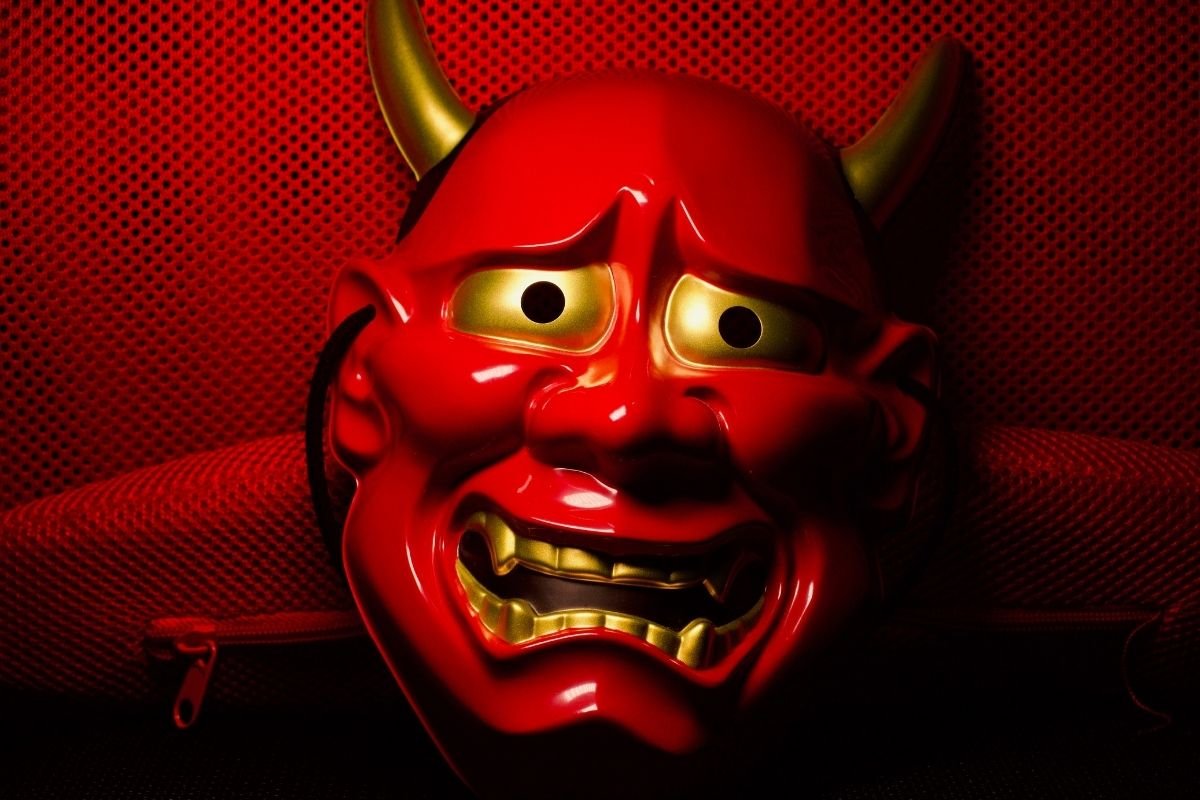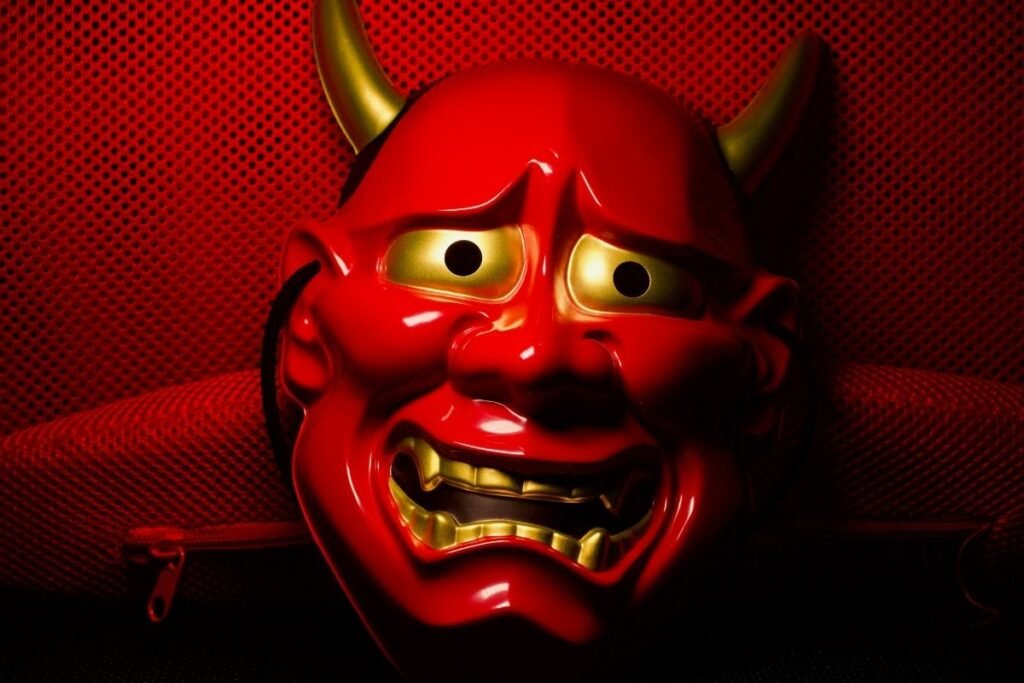Unless you are from Japan or are one to be very interested in their folklore and stories then you probably are not aware of what an oni is.
If this is the case, then this page is the best place to be because it will tell you all about the oni and how it has etched its place in Japanese culture.
What Is An Oni?

Oni is the go-to bad character in Japanese folklore, with a long history as brutes that choose violence over almost anything else.
They may be found all across Japan, from terrorizing youngsters at winter festivities to guarding the door to hell, and are easy to locate once you know where to look.
While oni are often regarded as monsters, some of them are kind. They’re not all evil, whether they’re welcoming guests to hot springs or providing joy to the inhabitants of Kunisaki.
They have human forms but tower over typical males since they are typically exceedingly massive and strong.
Their notoriously terrible visage is constantly grimacing and crowned with one or two horns, much like trolls or ogres elsewhere in the globe.
They also have big, pointed fangs that protrude from their mouths and dress in nothing more than a loincloth. Most people carry a trust baton in one hand, which they employ to assault everything they come across.
Oni are commonly seen in Japanese temples (see also ‘Top 10 Famous Japanese Temples To Visit‘), but you must look up high to see them. The roof decorations are designed like oni faces and serve to protect the shrine from evil spirits.
Although they may appear identical, it is important to stress that the two sculptures protecting temple gates are not demons.
Despite their strong appearance and menacing attitude, they are “Nio” or “Kongorikishi” – warriors who represent the birth and death of all things.
However, devils may be seen within temples.
History Of The Oni
The notion of oni is thought to have been imported to Japan with Buddhism in the 6th century and has subsequently developed in Japanese folklore.
In Japanese history, Oni have appeared in many aspects of life, from religion (mostly Buddhism) to literature, where they play the villain in stories such as Momotaro.
Oni were the servants of death in hell, responsible for torture and retribution in the underworld, according to Buddhist doctrine.
The name oni really refers to a wide range of supernatural entities, the most well-known of which are fearsome demons.
This portrayal is associated with Buddhism, appearing in portrayals of hell and as demons to be warded off in seasonal celebrations such as Setsubun.
It can also allude to deities and ancestor spirits, both of which can coexist with humans and are frequently connected with mountains.
The term oni can also be used to describe a variety of things; for example, in a practical meaning, it frequently refers to anything huge, such as oni-hide which is a big starfish.
It may also be used to define a person’s personality, as in ‘oni-shogun’ (lion-hearted shogun), which means bold.
Oni In The Modern Day
Oni have recently lost some of their initial evil and have taken on a more protective role. Men dressed in oni costumes, for example, frequently lead Japanese parades to ward off ill-luck.
Onigawara, or oni-faced roof tiles, are used in Japanese structures to ward off ill-luck, similar to gargoyles in Western culture.
Because of their ugly appearance, ferocious behavior, and ability to consume humans in a single mouthful, they may be utilized in legends to terrify youngsters into obedience.
In Japanese popular culture, the oni is still a prominent motif.
Their differing modern depiction sometimes relies on just one or two distinguishing features to identify a character as an oni; they will always have horns and will sometimes have a unique skin color, but such a depiction may otherwise appear human and lack the fearsome or grotesque features of traditional oni.
The context of oni in popular culture is also diverse, including appearances in animated cartoons, video games, and use as commercial mascots.
Popular Stories About Oni
Red Oni Who Cried
This is a story of two oni, one red the other blue. The red one wants to befriend humankind, but they are afraid of it, making the red oni cry.
Knowing what the red oni wants, the blue oni devises a plan to make himself the villain by attacking the houses of the humans and allowing the red oni to save the humans from the blue oni, making the red oni a hero to the humans’ eyes.
After the humans see the red oni protect them from the blue oni, they determine that the red one is a good oni whom they would like to be friends with, which is what the red one wanted.
Seeing this exchange, the blue oni decides to leave so as not to cause any misunderstanding with the humans.
When the red oni decides to go home to his friend the blue oni, he notices that the blue oni is gone and realizes what the blue oni has done for him and cries from being touched by the blue oni’s thoughtfulness and wonderful friendship.
Momotaro, The Peach Boy
This is another well-known story about an elderly couple who are unable to have a child, but they locate a large peach that magically gives them a boy as their kid.
As the youngster grows older, he learns of an island of demons where people are kidnapped and held as slaves and food after their money is stolen.
Momotaro sets out to travel to the island with some specially made for him cakes, and along the way, he meets a dog, a monkey (see also, ‘Are There Monkeys in Japan?‘), and a pheasant who team up with him to defeat the demons on the island, and once the demons are defeated, they recover the treasures and return them to their rightful owners.
Momotaro and his buddies return to their various homes after completing their mission.
Summary
There we have it, that is what an oni is. It sounds pretty terrifying and the stories that surround it through traditions and even modern adaptations allow it to live on whether we are scared of it or merely fascinated by it.
- What Is a Maiko? - July 13, 2025
- What Does Domo Arigato Mean? - July 12, 2025
- What Does Naruto Mean? - July 12, 2025









